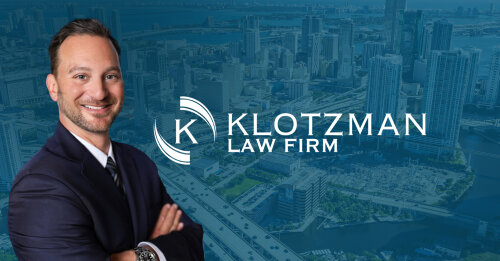Best Wrongful Death Lawyers in New York City
Share your needs with us, get contacted by law firms.
Free. Takes 2 min.
List of the best lawyers in New York City, United States
1. About Wrongful Death Law in New York City, United States
Wrongful death law in New York City allows certain family members and the decedent’s estate to seek monetary compensation after a death caused by another party’s negligence or wrongful conduct. In New York, two related actions usually arise: a wrongful death claim brought by designated beneficiaries and a survival action pursued by the decedent’s estate for damages that would have been recoverable had the decedent lived. These actions are governed by specific statutes and court rules that shape who can sue, what damages are available, and how long you have to file.
Key idea - Wrongful death claims focus on the impact of the death on survivors, while survival actions recover damages that the decedent could have recovered if alive.
Wrongful death actions are designed to compensate the survivors for their losses, while survival actions recover the decedent’s damages such as medical expenses and pain and suffering that survive the death.For the official framework, see the Estates, Powers and Trusts Law and related Civil Practice Laws and Rules in New York.
In New York, the primary statutory basis for wrongful death and related survival claims is found in established statutes that govern how these actions proceed in state courts. The wrongful death framework targets beneficiaries who suffer financial and non-economic losses after a death caused by another party's fault, while the survival framework allows the decedent’s estate to pursue the remaining damages. These provisions work together to provide a remedies structure appropriate to the loss suffered by families and estates in New York City and across the state.
For authoritative texts, consult official sources such as the New York State Legislature and the New York Courts. These resources explain how damages are calculated, who may bring claims, and how damages are distributed among eligible beneficiaries.
Relevant statutory references you may encounter include the Wrongful Death Act under Estates, Powers and Trusts Law and related survival provisions under the Civil Practice Law and Rules. See official resources linked in the Local Laws Overview section for precise language and updates.
Useful note - NYC wrongful death cases often involve complex relationships between family members, the decedent’s estate, and multiple types of damages. An attorney specializing in wrongful death can translate statutes into a practical case strategy in Manhattan, Brooklyn, Queens, the Bronx, or Staten Island.
2. Why You May Need a Lawyer
Wrongful death cases in New York City involve unique facts and procedural rules. A lawyer can help you navigate court deadlines, gather essential evidence, and coordinate with insurance companies, investigators, and medical experts.
Scenario 1: Construction site accident in Manhattan - A worker dies after a fall from a high-rise scaffold. A specialized attorney can identify liable parties, including general contractors and site supervisors, and pursue both wrongful death and survival claims. Quick action helps preserve safety regulations and documentary evidence such as OSHA reports and site video. A lawyer can also coordinate with safety inspectors and liaise with the city’s agencies.
Scenario 2: Auto collision in Queens - A family loses a breadwinner in a multi-vehicle crash caused by another driver. A wrongful death attorney will examine traffic surveillance, accident reconstruction, and insurance coverage to maximize recoverable damages for loss of support, funeral expenses, and additional costs. They will also determine if a separate survival action applies for medical bills and related expenses.
Scenario 3: Medical malpractice in a NYC hospital - A patient dies due to alleged hospital negligence. An attorney will review medical records, obtain expert opinions, and coordinate with medical professionals to establish breach of duty and causation. Wrongful death damages may include loss of companionship and financial support as well as medical and funeral costs.
Scenario 4: Nursing home neglect in the Bronx - A resident dies after alleged neglect or malnutrition. A lawyer can evaluate facility records, staffing patterns, and regulatory actions by state and local authorities. These factors influence liability and the potential for additional punitive or statutory remedies beyond medical expenses and loss of services.
Scenario 5: Product defect leading to fatal injuries in NYC - A consumer dies from injuries linked to a consumer product. An attorney can trace product liability theories, identify responsible manufacturers or retailers, and pursue compensation for survivors and the estate under both wrongful death and product liability theories.
Scenario 6: Domestic or family violence- linked death - If a death results from wrongdoing by a party with a duty of care, a lawyer can advise on eligibility under New York statutes and potential protective issues, alongside the wrongful death claim.
In each scenario, a qualified wrongful death attorney can help with eligibility, investigation, evidence preservation, and negotiation strategies for settlements or trials. Early consultation is often crucial to protect evidence and secure proper representation.
3. Local Laws Overview
The New York wrongful death framework rests on two core legal pillars: the Wrongful Death Act and related survival provisions. These govern who can sue, what damages are available, and how claims proceed through the courts. Understanding these statutes helps families in New York City assess their rights and options quickly after a loss.
Estates, Powers and Trusts Law (EPTL) - Wrongful Death Act - This statute designates who may sue for wrongful death and outlines the basic structure for recovery by survivors. It also defines the types of damages recoverable in a wrongful death action. You can review the official language of EPTL § 5-4.1 on the New York Senate site.
Civil Practice Law and Rules (CPLR) - Survival and Limitations - Survival actions preserve the decedent's claims for medical expenses, pain and suffering, and other damages that the decedent could have pursued if alive. The CPLR governs procedure, accrual, and timing for these actions, and it interacts with the wrongful death claim to provide a full damages framework. See official CPLR discussions on the New York Senate site for the applicable sections.
These statutes are complemented by general civil procedure principles, discovery rules, and evidence standards that apply in New York City courts. For precise language, consult the official sources linked below and discuss implications with a local attorney who understands NYC practice and courtroom norms.
Recent changes or trends - There have not been sweeping statutory changes to the core wrongful death framework in recent years. Ongoing court reforms focus on procedural efficiency, electronic filing, and discovery practices that affect how wrongful death cases are processed in NYC courts. For current developments, check official court notices and legislative updates.
For authoritative text and updates, refer to:
- Estates, Powers and Trusts Law - EPTL § 5-4.1 (Wrongful Death Act)
- Civil Practice Law and Rules - CPLR (Survival and limitations)
4. Frequently Asked Questions
What is wrongful death under New York law?
Wrongful death is a civil action brought by designated beneficiaries after a death caused by another party's fault. It covers losses like financial support and companionship. It is separate from a survival action, which the decedent’s estate can pursue for damages the decedent would have recovered.
How do I file a wrongful death claim in NYC?
Consult a qualified wrongful death attorney who will determine eligibility, locate liable parties, and prepare a complaint. The court where you file depends on the location of the death or where the defendants reside. An attorney will handle service, discovery, and potential settlement discussions.
When does a wrongful death case have to be filed in New York?
Statutes of limitations apply to wrongful death actions, typically requiring timely filing after the death. The precise deadline depends on the facts and applicable statutes. A NYC attorney can confirm the exact deadline for your case.
Where should I file in New York City?
Wrongful death claims are usually filed in the Supreme Court of the state, New York County or the appropriate borough court, depending on where the incident occurred and the defendants’ residence. Your attorney will determine the proper forum and venue.
Why do I need a lawyer for wrongful death matters?
A lawyer helps identify all liable parties, preserves crucial evidence, and navigates complex state statutes. They also handle negotiations with insurers and pursue both wrongful death and survival claims, if applicable.
Can a surviving spouse recover damages for wrongful death?
Yes, a surviving spouse may have a right to recover damages under New York law as a designated beneficiary. Benefits can include loss of financial support and companionship, subject to statutory rules.
Should I pursue both wrongful death and survival actions?
Often yes. The wrongful death action targets survivors, while the survival action targets damages the decedent could have recovered had they lived. An attorney can determine whether both paths apply in your case.
Do I need to prove fault or negligence for a wrongful death claim?
Yes. In most cases, you must prove that another party's negligence or intentional conduct caused the death and that damages flowed from that death. A qualified attorney can help gather evidence to prove causation and fault.
Is there a cap on damages for wrongful death in New York?
New York does not impose a universal cap on wrongful death damages. Damages typically include economic losses such as loss of financial support and medical expenses, as well as non-economic losses like loss of companionship.
How much does a wrongful death attorney cost in NYC?
Many wrongful death lawyers work on a contingent fee basis, meaning fees are paid from the recovery if the case resolves. The specific percentage and expenses should be discussed during a consultation.
What is the typical timeline for a NYC wrongful death case?
Timeline varies widely based on case complexity, discovery, and court schedules. Some cases settle within months, while others proceed to trial after one or more years. Your attorney can provide a targeted timeline after reviewing your facts.
Do I qualify to file wrongful death claims in NYC?
Eligibility depends on your relationship to the decedent and statutory rules. Typically, spouses, children, and certain other close relatives have standing, along with the decedent’s estate for survival actions. A lawyer can confirm your eligibility based on your circumstances.
5. Additional Resources
These official resources offer authoritative guidance on wrongful death and related actions in New York:
- New York State Unified Court System - Official information on court procedures, filings, and case management in New York City and statewide.
- Estate, Powers and Trusts Law (EPTL) - Wrongful Death Act - Statutory framework governing wrongful death actions and beneficiaries.
- New York State Bar Association - Professional guidance and consumer resources on wrongful death matters.
6. Next Steps
- Gather key documents within 2 weeks of the death: death certificate, medical records, and a list of potential witnesses and accounts. This helps establish the basis for liability and damages.
- Identify potential beneficiaries and the decedent’s estate to determine whether a wrongful death and/or survival claim exists. A lawyer can map eligibility within 1-2 weeks.
- Consult a NYC wrongful death attorney for a free assessment. Bring documentation and a timeline of events to the initial meeting.
- Schedule an initial, no-obligation consultation within 2-3 weeks to discuss strategy, potential defendants, and likely damages.
- If you hire a lawyer, authorize access to medical records and other relevant materials, and discuss preservation of evidence with your attorney within 1 week of engagement.
- File the necessary complaints and begin the discovery process within the statute of limitations, with your attorney guiding the deadlines and motion practice. Expect pre-trial motions and possible mediation in months 3-12.
Lawzana helps you find the best lawyers and law firms in New York City through a curated and pre-screened list of qualified legal professionals. Our platform offers rankings and detailed profiles of attorneys and law firms, allowing you to compare based on practice areas, including Wrongful Death, experience, and client feedback.
Each profile includes a description of the firm's areas of practice, client reviews, team members and partners, year of establishment, spoken languages, office locations, contact information, social media presence, and any published articles or resources. Most firms on our platform speak English and are experienced in both local and international legal matters.
Get a quote from top-rated law firms in New York City, United States — quickly, securely, and without unnecessary hassle.
Disclaimer:
The information provided on this page is for general informational purposes only and does not constitute legal advice. While we strive to ensure the accuracy and relevance of the content, legal information may change over time, and interpretations of the law can vary. You should always consult with a qualified legal professional for advice specific to your situation.
We disclaim all liability for actions taken or not taken based on the content of this page. If you believe any information is incorrect or outdated, please contact us, and we will review and update it where appropriate.













